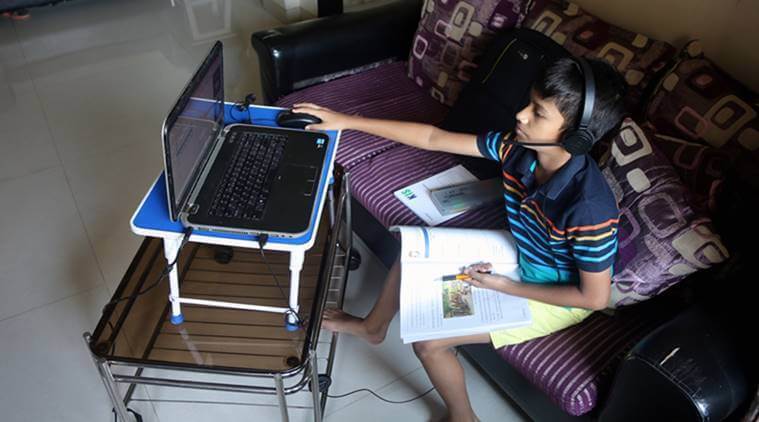
EU adopts new rules to significantly cut packaging waste with re-use targets
The European Union has formally adopted a regulation on packaging and packaging waste. The new ...

Before the onset of the pandemic, digitalisation of education was often equated with equipping a campus with Wi-Fi. Ironically, while Covid-19 is causing harm to human society, it led to the establishment of remote learning. Today, both educators and parents have a better handle on guiding children through a flipped learning environment where the educator guides students as they apply concepts and engage creatively in the subject matter.
However, as societies and communities across the world try to protect themselves from the virus, children are bracing themselves for a changed normal. Child psychologists and educationists have been vocal on the impact of a lockdown on the minds of young children. They have suddenly had to adjust to being away from their schools, friends and teachers. Incidentally, being away from school for a very long time in early years creates gaps in learning that impact developmental milestones. While online classes warrant an easing of the situation, it is a fact that every child’s experience of remote learning will be different. These differences are intensified by social divides, access to technology, availability of resources and the amount of parental support and input the kids receive.
The idea of remote learning is new and possibly intimidating for many parents. While many schools rolled out online classes for children, there are many families who are also undergoing financial stress, employment flux or pressures of home working as a result of the pandemic. However, adult worries aside, a continued learning routine will allow our children some degree of choice and independent learning within the activities and work set by teachers. So, schools must ensure to make remote learning convenient, purposeful and engaging for the youngsters.
It is therefore important for parents to keep certain factors in mind as they collaborate with educators to make the transition fun for young children. We are in the middle of a global health crisis and the physical and mental health of our students is far more important than the assessment measures on which we relied during normal times. The core idea remains to build a plan that includes a variety of learning experiences, online and off, by modifying or adapting activities to meet the needs of our children.
The truth is, Covid-19 has fuelled the creation of remote learning pedagogy that has to be more creative in execution. The unique and intricate nature of the current situation means everybody has to adapt. Teaching styles must evolve to ensure that young children, regardless of their situation, enjoy the experience of learning, while continuing to engage with their teachers and classmates.
Typically, for young children, a blended approach of clear, structured activities and aspects of project-based learning work well. This may help to alleviate challenges around differing access to technology and maybe a potentially more sustainable long-term approach to homeschooling. In addition to clear tutoring, guiding, questioning tasks, teachers may wish to provide opportunities for children to take their time on longer projects.
This approach gives children greater autonomy over their own learning and encourages them to participate with complex questions and real-world problems. It also allows children to follow their own inquisitiveness, while also helping teachers and parents, as the day is broken down into short modules. Project-based learning requires careful scaffolding from teachers and parents, especially for the young kids, through careful prompts and helping children to learn at their own pace. Project-based learning helps teachers to focus on building a child’s natural skills while giving them the opportunity to undertake independent learning. While children will learn new things and acquire new information owing to their projects, teachers should remain in control of what concepts are taught.
The introduction and success of new technology in a classroom can only be enabled when combined with best teaching practices. Also, with digital tools, the social environment of school can be created as best as possible. Without after-school activities, playdates, and daycare, children will be looking for other ways to entertain themselves and keep busy. Without their normal activities, it is important for parents and teachers to come up with ways to keep them happy, healthy and engaged while at home. It is important to understand that our children are most likely bored, afraid, confused, and stressed. It is easy to worry that they are not learning enough or that they are losing motivation because remote learning is challenging. However, young children are more resilient than we think, and we have to be realistic with ourselves as educators.
We are unquestionably more dependent on technology now than ever before, but there is a need to harness this technology and digital skills to navigate complex online learning materials. A careful framework and simple instructions from teacher and parents will help young children to work in their own time, using the resources available to them. Remarkably, while it assimilates technology in terms of communication and presentation, it will also allow kids to learn self-sufficiently remotely.
The European Union has formally adopted a regulation on packaging and packaging waste. The new ...
Inaugurating the Abydos Solar Power Plant in the Upper Egypt governorate of Aswan represents a ...
Businesses that fail to adapt to climate risks like extreme heat could lose up to ...


اترك تعليقا